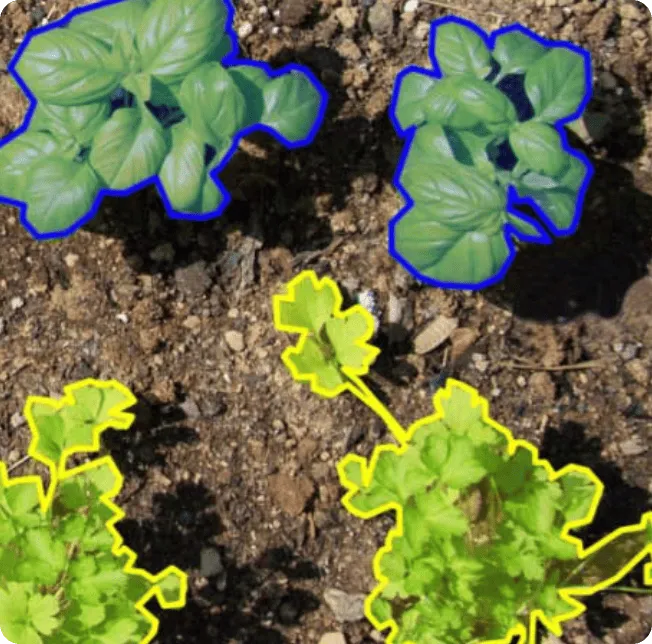Industries We Serve

How Annotation Services empowering Agriculture?
Data annotation is key at agricultural level, to create AI models that are capable of automating and optimizing different Agri tasks (such as crop monitoring, weed control or yield estimation). Labelling data helps machines and robots understand agricultural environments better and makes informed decisions.

Bounding Box annotation for crop detection:
To train models to detect the presence of a crop in an image, crops’ first enclose them individually in images using 2D bounding boxes. This is needed to track growth, find out what kind of crop you’ve got, and to generally look at plant health.
Polygon Annotations for weed detection:
Polygon Annotation allows more accurate outline of weeds, and therefore better fine tuned models can be built to distinguish between weed and crop structures in dense or mixed environments.
Object Detection (Bounding Boxes):
Ripe fruits like apples, tomatoes and strawberries are annotated using the bounding boxes so that robots or automated systems can then identify and harvest them if they’re mature.
Bounding Boxes or Polygon Annotation for Disease detection:
When it comes to damaged or diseased leaves or fruits, the system recognizes specific types of damage or disease by simply labelling the affected areas with bounding boxes or polygons in close up images.
Bounding Boxes or Image Annotations for Growth calcutation:
By labelling the growth stages of crops such as seedling, flowering and fruiting, within the images, AI systems can measure the rate of crop development and advise on harvest windows. It allows farmers to optimise their irrigation, fertilisation and other growth actions.
Bounding Boxes or Polygon Annotation for Disease detection:
When it comes to damaged or diseased leaves or fruits, the system recognizes specific types of damage or disease by simply labelling the affected areas with bounding boxes or polygons in close up images.
Semantic Segmentation for finding Soil type:
Used to label different types of soil, water area, and other environmental features. Cameras on drones can be used to assess the spatial distribution of water and soil types in a field and to inform irrigation practices.
Contact Annotation Support to build AI and robotics solutions which increase productivity, reduce resource use and improve overall farming operations' efficiency. Our annotation services provides high quality training data which enables precise crop management, targeted intervention and automate labour intensive tasks which makes farming more sustainable and scalable.
